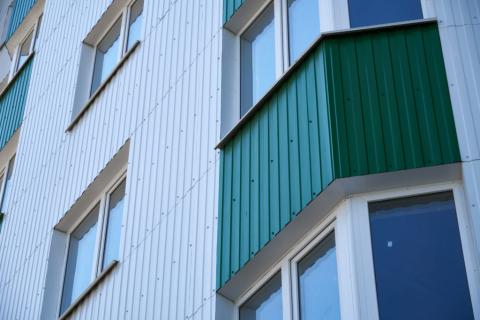

Choosing and Installing Windows, Doors and Skylights with Fewer Hazardous Chemicals
Materials used to manufacture windows, doors, and skylights are similar to other sectors and can include many of the same chemicals mentioned in previous sections. For example, wood doors can have potential formaldehyde and flame retardant issues because of an insulated core or a surface veneer treatment, while vinyl or painted products can contain additional hazardous content. Overall, health complaints from the products are not as prevalent given the smaller amount of materials compared to, for example, the square footage of painted walls or installed insulation.
Installation brings its own concerns, as one-component spray foam is often used to seal the area around a window or door opening. This spray foam is not as toxic as the 2-component used for insulation, but still releases isocyanates. Additionally, VOCs can off gas from adhesives used to construct windows, doors, or skylights. With windows and doors typically being made locally, products could be delivered shortly after application of these various chemicals, potentially increasing the amount of exposure.
Information in this section draws from and adapts the work of Habitable. Visit Habitable’s Informed website for the most updated guidance.
| Product Type | Chemicals of Concern | Health Concerns | Guidance |
|---|---|---|---|
Doors, Windows, and Skylights
| Adhesives (silicone, polyurethane) Solvents (toluene, xylene) | PBT, reproductive toxicity, endocrine disruptor, infertility Cancer and liver toxicity, confusion, death, respiratory irritation, gene mutation | Choose products with third-party certifications |
| Composite wood windows and doors | Formaldehyde | Cancer, gene damage, asthma trigger, birth defects, eye and skin irritant | Choose NAF (No Added Formaldehyde) products or CARB phase 2 compliant products with Ultra Low Added Formaldehyde |
| Insulated doors, windows, and skylights | Isocyanates (MDI, PDI) Halogenated flame retardants | Cancer, asthma trigger, birth defects, eye and skin irritant Endocrine disruption, reproductive toxicity, cancer, and birth defects | Choose products with third party certifications |
| Painted Doors, Windows, and Skylights | Alkylphenol ethoxylates (APEs) | Endocrine disruptor, persistent bioaccumulative toxicant | Choose products with third party certifications |
| Vinyl windows, doors, and skylights | Phthalates | Reproductive, developmental effects, respiratory problems | Choose Energy Star fiberglass products instead |
Composite Wood Products
Formaldehyde is used as a binder in the production of composite wood products including hardwood plywood, medium-density fiberboard, and particleboard. Emissions from resins in composite wood products is one of the main sources of formaldehyde exposures. Although wood naturally emits trace amounts of formaldehyde, added formaldehyde in composite wood products should be avoided.
Instead, look for products that have been tested and approved as No Added Formaldehyde (NAF) through (California Air Resources Board) CARB or Toxic Substances Control Act (TSCA). At the very least, ensure that all composite wood products are low-emissions certified as compliant with CARB Phase 2 or TSCA Title VI.
Emissions Standards for No Added Formaldehyde-Based Resins
No higher than 0.04 parts per million of formaldehyde for 90 percent of the 3 months of routine quality control testing data.
No test result higher than 0.05 parts per million of formaldehyde for hardwood plywood and 0.06 parts per million for particleboard, medium-density fiberboard, and thin medium-density fiberboard.
Healthier Windows, Doors, and Skylights
Look for these labels:
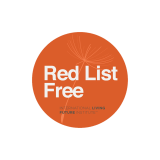
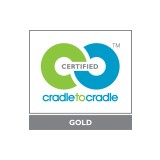
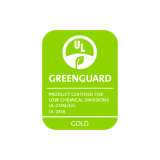
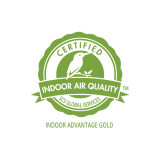
| Avoid | Good | Better | Best |
|---|---|---|---|
| Vinyl products | CARB phase 2 compliant indoor doors with low-formaldehyde emissions | CARB phase 2 / TSCA Title VI with Ultra Low Emitting Formaldehyde Label | ENERGY STAR fiberglass or wood windows and doors Pre-finished solid wood doors Composite wood products tested and approved as NAF (No added formaldehyde) Use low-VOC certified adhesives |